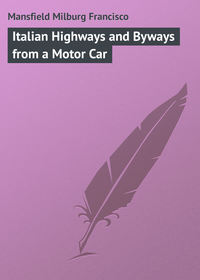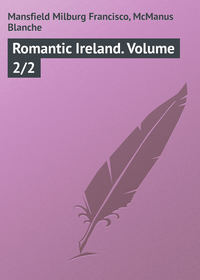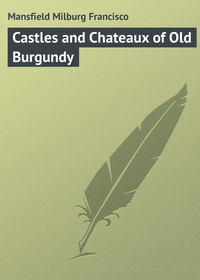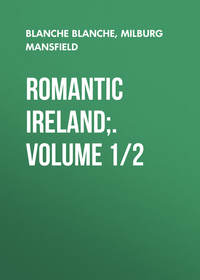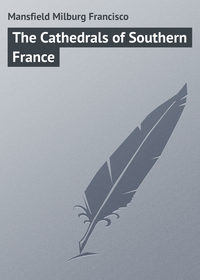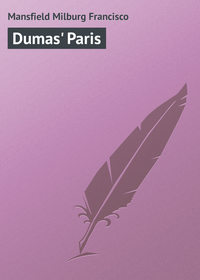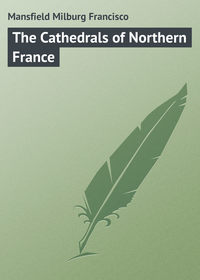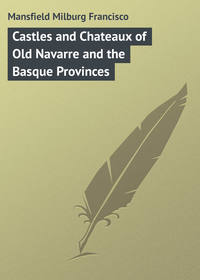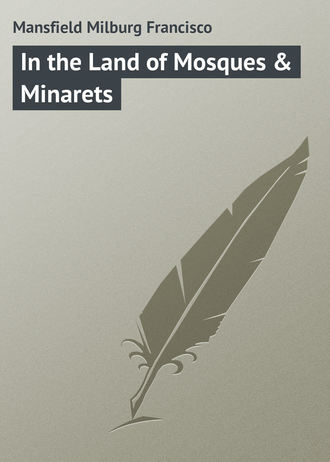 полная версия
полная версияIn the Land of Mosques & Minarets
There is a current story in military circles in Algeria concerning the gift of an Arab chief to a French general commanding a division. It was not gold or jewels or goods of any kind, but a simple, secret admonition: “Never trust an Arab – not even me.” With variations this may be true enough, but the average traveller among these now loyal French citizens will have no cause to regret any little confidences he may commit to a friendly Arab or Berber; though, of the two, the latter being certainly the more faithful.
The railway, the telegraph, and the military have developed Algeria to what it is to-day. The Arab originally did not love the French, indeed he had no cause to, for they came and overran his country and put down abuses which he did not wish to have put down; but he has become philosophical, and has recognized that the iron horse forms a better means of transport than his mules and camels for the stuffs and goods of his trade and barter. He is commercial enough to want to do more business and make more money, so he tolerates the French; and, since his first experiences with the new order of things, he has prospered beyond his wildest dreams. That has civilized and subdued the Arab in French Africa. It would subdue any savage.
The fantasia is the classic diversion and showing-off pace of Algeria’s Spahi cavalry. No great function, local or otherwise, is complete without a fantasia, and here the Spahi is at his uncontrolled best. He rides dashingly around the field of the manœuvres, slashing with his sword at a leathern dummy of a man or a wooden ball on the top of a post, or with his stocky carbine shoots from the saddle, leaps hurdles, or throws his firearm high in the air and catches it again on its fall. All the time his charger is rushing about wildly and without method. The whole is a veritable military orgie of target-shooting, steeplechasing, marching and countermarching, and all with as picturesque a personnel and costuming as a circus.
It is mimic savage warfare uncontrolled, and far more real and warlike than the goose-step evolutions of European armies. The fantasia is a spontaneous, every-man-on-his-own sort of an affair. The smell of gunpowder is in the air, and no Wild West or Cossack horseman ever gave half so vivid an example of agility as does a Spahi or a goum on his African jour de fête.
CHAPTER XIII
FROM ORAN TO THE MOROCCO FRONTIER
THE western gateway to French Africa is through Oran, which, with its 88,000 inhabitants, is the second city of Algeria. Its chief attraction for the tourist who has seen, or is about to see, the rest of the country is its magnificent site and the recollection of the momentous history of its past.
The most striking characteristic of its life and manners is the manifest Spanish influence which is over all, a relic of days gone by. Even the chief city gate, the Porte d’Espagne, still bears the ornamental escutcheons of the old Madrillenian governors; and, three kilometres distant from the centre of the town, are the celebrated “Bains de la Reine,” a remembrance of the epoch when Jeanne, “La Folle,” daughter of Ferdinand the Catholic and Isabella, the mother of Charles V, took the baths there in state, “in company with a brilliant cortège of knights and ladies.” Bathing was more of a public ceremony then than now, evidently.
One aspect of the life at Oran which one does not remark elsewhere is the numbers of Moroccans who slowly amble up and down, doing nothing, and living apparently in some mysterious fashion. The Moroccan of to-day is the typical Berber of our imagination, swarthy, lithe, and scraggy-bearded. He is not lovely to look upon, but he is picturesque.
One of the chief sights to be noted in the markets of Oran is the fruit market; and the principal article of commerce is the grenadine, a historic and classic fruit, and the one the most in favour with the Arab or Berber of simple tastes. It is not without reason that he chooses this delicious fruit; for it is food and drink in one. D’Annunzio called the grenadine an “écrin en cuir vermeil, surmonté de la couronne d’un roi donateur,” and the description is faithful and poetic enough for any man. The Arab toubibs, or doctors, believe it to be an efficacious remedy for all ills, and that its seed originally descended from the skies, a gift from Heaven to struggling humanity. It is certainly very beneficent as a remedy for tropical fevers.
One will strain his eyes trying to hunt out more than a few of the vestiges of the old Oran of the Spaniards. The French have very nearly wiped them out. It was a great port in the days of the Romans, and between that time and the Spanish occupation it had a long history. The Mohammedans founded a town here a thousand years ago; and, about the time Columbus was sailing around the West Indian island trying to find a new way to the Orient, a Spanish author wrote that Oran had six thousand houses, a hundred and forty mosques, and schools and colleges equal to those of Cordova, Granada and Seville. It was sometime after this that Oran became Spanish, and in turn it reverted to the banished Moors, to become French in 1831.
Oran’s evolution from Spanish to French is interesting. It was once a penal colony of Spain, where from seven to ten thousand wicked unfortunates sweltered under an African sun, laying the foundations of the present fortifications. The memory of this Spanish occupation is everywhere, but it is a memory only and is continually growing more vague. The soldiers of Islam captured Costechica from the Spaniards, and the French came in turn and took it and called it Oran.
Oran, like the rest of the North African coast cities and towns, is polyglot in its people and its architecture. The Orient rubs shoulders with the Far West, and the mingling is more astonishing and picturesque than delightful. A red fez, an alpaca coat, and white duck trousers is a bizarre effect, so is a bowler hat and a burnous. Joseph’s coat of many colours was not more gaudy than that of many a Berber or Arab one sees to-day in Oran. The Sultans of other days have given way to an army Commandant, who, if he is a more practical person, is usually a less artistic one, and his influence is reflected in all his surroundings.
The two religious monuments of Oran are celebrated throughout all Algeria. The cathedral of St. Louis is a stronghold of the Christian church and an imposing, if not a very elegant, structure; whilst the Grande Mosquée, with the most remarkable and quaint octagonal minaret in all Algeria, was built by a former pacha of Algiers with the money coming from the sale of Christian slaves. These two edifices well illustrate two opposing points of view, but they are both religious monuments.
If you can stand a mountain climb from Oran, go up the slope of Mount Mourdjadja, and have what a German authority has discovered to be the most impressive view in the world. The distance is but a few kilometres and the means of communication is shanks’ mare. Majorca and Almeria on the coast of Spain may, it is said, be seen on a fine day. We have our doubts! The climb is the classic, conventional thing to do, however, if time permits.
Oran, like Algiers, Bona, and Philippeville, has become Europeanized, Frenchified. Four-fifths of its population is native, but ask a Frenchman and he will tell you: “Il n’y a rien d’exotique, c’est Paris.” This shows that the Frenchman frequents the French part of the town, and knows little of the hidden charm which exists on the fringe. He knows the Arab as an inferior menial, or a possible customer for his goods, but he knows nothing of his life, and cares less.
The chief reason for coming to Oran at all is that it is the most convenient starting-point for Tlemcen. Tlemcen, lying well over to the Moroccan frontier, but linked with Oran by railway, is, in its plan and manner of life, the most original city in North Africa, the most captivating, and the least spoiled by modern innovations. It was the Pomaria of the Romans and enjoys to-day the same admirable belt of wooded shade that it did in those far-off days.
Tlemcen under Arab rule was sovereign of all the Moghreb, one of the great capitals of the Khalifs, the rival of Granada, Kairouan, Damascus, Cairo, and Bagdad.
Above its rocky-red substructure the walls and minarets of Tlemcen still pierce the azure sky, but no longer do the Sultans rule its people. A wild, untamed, savage soldiery has given place to French civil and military rule, and everybody is the more happy therefore. The Méchouar, the ancient palace of the Sultans, is an abandoned ruin, and the caserne of the Spahis and the Chasseurs d’Afrique now stand for a superior variety of law and order. The architecture of the Moors is at its very best at Tlemcen, even the fragmentary dilapidated remains in hidden-away corners are often the rival of the gems of the Alhambra itself.
Tlemcen is the most splendid and gracious artists’ paradise in Algeria. A roving Frenchman whom we met at Algiers, and who painted better than he versified, wrote the following for us on the back of his card which he gave us as an introduction to the patron of the Hotel de France at Tlemcen.
“Il n’est pas une citéQui dispute, sans folie,A Tlemcen la jolieLa pomme de la beautéEt qui gracieuse étalePlus de pompe orientaleSous un ciel plus enchanté.”To-day at Tlemcen, more than in any other place in Algeria, one sees vestiges of the Moorish art and civilization of the days before the conquest, sculpturings in wall and gate, and tiny cupolas and minarets of a period greatly anterior to most others of their class. The fragmentary remains of Tlemcen’s sixty mosques existing in the sixteenth century spring into view here and there, at each turning, in bewildering fashion. Tlemcen is in its decadence however, for from a city of 125,000 souls it has dried up to one of 30,000, of which perhaps a tenth part are European.
Tlemcen has many mosques, of which three must be noted as having been “viewed and remarked,” as the antiquarians put it. The Grande Mosquée is the least grand, but it has a fine tower; the smallest mosque, that of Djama l’Hassen, is the most beautiful, and the best example of genuine Moorish architecture and decoration; the Mosque of El Haloui is the most daintily ornamented and most charming. The others dwindle down to ruined nothingness. Out of fifty-seven other minor mosques, most have been converted into cafés, shops, dwellings and sheep-folds, some are in ruins and some have disappeared entirely, but it is these unexpected fragments of a one-time splendour that makes the charm and value of Tlemcen for the artist.
The native life of Tlemcen is another great feature for the stranger, and a caravan of savage-looking creatures from Morocco is no unusual sight on a market day. How the late “disturbances” in Morocco are going to affect the interstate traffic remains to be seen. Probably the interstate part of it will be wiped out, and France will absorb it all, as she ought to do, whatever England and Germany may think. France has made a success in governing Mohammedans; the others have not. Jews, Ethiopians, and Arabs all people Tlemcen. That is what makes it so interesting to-day, and the types seem to be purer than elsewhere.
In the third century Tlemcen underwent a formidable siege at the hand of a Soudanese and his followers. The assailants were as tenacious as the defenders, and many times were obliged to retreat. It was one of the remarkable sieges of history. The would-be invaders built houses to replace their tents which were no protection against the rude climate they were forced to undergo for a protracted period, as did the Spaniards of Santa Fé under the walls of Granada. Less fortunate than Ferdinand and Isabella, the enemies of the Khalifas of Tlemcen were obliged to retreat, abandoning their fortifications on the height, which the besieged, however, disdained to occupy. It is thus that the fortifications of Mansourah have remained unoccupied for six hundred years, an ignoble monument to a campaign that failed.
The countryside roundabout is fresh and thickly grown with a subtropical African flora, but the snows of a rigorous winter – which occasionally rest on the hillsides for weeks at a time – give a weird, contrasting effect hard to reconcile with the topographical and architectural features of the landscape. The sight of Mansourah under a snowy blanket is one of the surprises which one, who twenty-four hours before left the vine-clad hillsides of Médea and the plains of orange groves neighbouring upon Blida, will never forget.
The legend of the Mosque of Mansourah is a classic among the Arabs who inhabit the mountain city of Tlemcen. A negro king of the Soudan, who himself as well as his followers were Mussulmans, invaded the region beyond the Atlas and laid siege to Tlemcen. So long and well-sustained was the siege that the invading army sought to build a mosque in their midst. A sort of competition was held, and the winners were a Jew and an Arab. The Soudanese king was at first embarrassed, and then enlightened by a happy idea which church-building committees might well adopt. He commissioned the Arab to proceed with the construction of the interior of the mosque, the Jew to be responsible for the exterior. A wonderful struggle took place, in which all the arts and ingenuities of the two races were brought to play, and which resulted in one of the most splendid of all Arab mosques.
The warrior king was highly pleased, and, calling the builders before him, said, frankly, that he had no words to express his satisfaction, nor ideas as to how they might be recompensed. The thing dragged for a time, as payment of architects’ bills has ever done; and partisanship so got the influence of the better instincts of the king that, while he gave the faithful Mussulman builder many purses filled with gold, he condemned the “dog of an infidel Jew” to be imprisoned in the upper gallery of the minaret, for having dared to even penetrate the holy edifice. It never occurred to the dusky monarch that the procedure was defiling the shrine still more.
“Escape if you can,” the Jew was told, as he was conducted to his prison. He did escape, after a fashion, so says the legend; for he made himself a pair of wings out of reeds and silks and cords; and, just as the blood-red sun plumped down behind the mountains of the Atlas, he launched himself in air. Like most flying-machine experimenters before and since, however, the daring innovator came forthwith to grief, falling precipitately at the base of the structure and smashing his skull.
He died almost instantly, but before he expired he uttered a final imprecation; the earth trembled, the thunder rolled, and the lightning blasted the minaret, which fell, as it may be seen to-day, lying almost en bloc, at full length, on the ground.
The same legend has its counterpart, with variations, in other lands, but it is as likely to be true of the Mosque of Mansourah as of the Cathedral of Orgis in Roumania, or at Cologne, in Crete or in Scandinavia. Legend was spread broadcast, even in the dark ages, by a system of “wireless” which has not yet been improved upon.
Beyond Tlemcen the nearest Algerian settlement of size to the Moroccan frontier is Lalla-Marnia, twenty-four kilometres only from the centre of the late insurrection at Oudjda, now occupied by the French. The name of this advanced post comes from that of a sainted woman buried in a tiny kouba near the military camp. The place was always a strategic point, and formed the military frontier post of a band of Syrian invaders, who gave it originally the name of Numerus Syrorum.
Lalla-Marnia and Oudjda, one on Algerian soil and the other in Moroccan territory, separated by twenty-five kilometres of sandy roadway, bear each other a sisterly resemblance. The fêtes of Lalla-Marnia, with fantasias and horse-races and a savage feasting of the natives, are followed by their counterpart at Oudjda a week later. Needless to say the fêtes are as yet unspoiled by non-contemporary interpolations.
North from Lalla-Marnia is the little townlet of Nédroma, whose clannish inhabitants are one and all descended from the Moors of Andalusia. The type here is the purest in North
Africa, and the custom which binds them together, presumably as a totem or prevention against marrying with outsiders, is most curious. Each head of a family guards preciously the key of the paternal house in Spain, the same with which his ancestors locked their doors when they fled at the time of the expulsion of their race from the peninsula. Every one of the Moors of Nédroma expects some day, when the great bell sounds the tocsin of revenge, to return and take up life anew in Andalusia.
Away to the south of Tlemcen, or from Perrégaux, if one follows the railway, runs the road to far Sahara of the Sud-Oranais. Ain-Séfra, Beni-Ounif and Figuig are not even names known to the average outsider, albeit they have already achieved a certain prominence among geographers. Here the habitants, their manner of living, and their architecture take on a complexion quite different from anything known among the tribes of the north. All is blended with a savage crudeness which is alike exotic and picturesque. The Moorish mosques of the north give way to a severe Arab manner of building which is formidable and massive in outline and grim throughout. Mud, baked mud of a dingy red, packed together with straw and propped and bolstered here and there with the trunks of the palm-tree, are the chief characteristics of the Saharan Arab’s place of worship and of his dwelling as well. The contrasting descent from the beauties of the Mauresque variety is astonishing.
Throughout the Sud-Oranais civilization of the European brand is fast spreading; the railway and the telegraph have reached Figuig and beyond, and absinthe – of a particularly forceful brew – can be had in the cafés, also Swedish matches (made in Belgium) and clay pipes (from Holland). Not long since all was a desert waste, but the “Légionnaires,” that mixed crew of nation-builders propagated by the French military authorities, went down into the interior and traced roads and built fortifications until this anonymous work came to be succeeded by that of merchants and traders of all creeds.
One finds the “kif” shops at every little village en route, often where he will not even find a “café maure.” Frequently in the towns these dens are relegated to a site without the walls, but they huddle as closely to the centre of affairs as the authorities will allow.
Architecturally and artistically they are but vile, unlovely holes, lighted usually by a single œil hanging from the middle rafters. Most likely this œil is a fifty-cent barn lantern, made after the real Connecticut pattern, probably in Belgium or Germany. The oil that it burns is not even American; the “Standard” here in the Mediterranean is often Russian – put up in American tins. However, now that King Leopold of Belgium has gone into partnership with “Standard” representatives in the rubber business of the Congo, it’s only fair to suppose there may be a Rockefeller interest in the Russian oil trade.
These fumeries de kif are to all intents and purposes low-class cafés, peopled with all the nomad riffraff of the Mediterranean from Mogador to Crete. Seemingly no one is proprietor, but each shuffles around for himself regardless of any apparent reckoning to come. It is a picturesque setting indeed for a theatre of crime.
For furnishings, a straw mat covers a part of the floor, and a few cushions of grimy embroidered, or embossed, leather are backed up against the wall here and there. A great carven coffer, presumably a strong box containing the stock, ends the catalogue, if one excepts the now smoke-dimmed arabesques and horseshoe arched decorations of the walls themselves.
In one we saw tied a bald-headed vulture, a dirty fowl, and an itinerant blind musician with a tanned skin, twanging out minor chords on a gambri, or Arab guitar with two strings, and those not even catgut, but a poor Arab substitute therefor.
Figuig is the end of the railway line into the Sud-Oranais, and, though it and its Grand Hotel du Sahara are of little interest to the tourist, the surrounding environment is as far removed from civilization as one could hope to get and yet find himself fairly comfortable between the four walls of a hotel of imposing proportions.
Figuig is the virtual end of encroaching civilization; eight hundred odd kilometres from the coast straight south into the desert. The railway is not intended to stop at Figuig; and, by this time, it may have reached Colomb-Béchar, a hundred kilometres further on, to which point it was projected when these lines were written. Fifteen miles an hour is the ordinary speed of this toy railway, and the journey takes from twenty-four to thirty hours of uncomfortable and dusty travelling, which costs, however, only a matter of a hundred francs or so, coming and going.
Going east from Figuig, four hundred kilometres, the only communication being by the caravan trail, is Laghouat, another outpost of civilization on the desert’s edge.
Laghouat, like most desert towns, like Touggourt, like Tozeur, like Biskra even, is an oasis. In its markets one may see the traffickings of all the desert types of the Sahara, from the M’zab – the Auvergnats of Algeria – to the wandering nomads of the south, – the tramps of the desert, not omitting the picturesque Ouled-Naïls and the terrible Touaregs, with their still more terrible-looking guns and their heads swathed in black veils.
At Laghouat and Figuig one gets the truest perspective of the life of the desert that one can have short of Oued-Souf in the Sud-Constantinois. Biskra is in the class of “exploited tourist points,” whilst these desert towns are practically inaccessible to all but the hardiest of travellers, – the real genuine travel-lover, not those who are averse to riding in creaky diligences with dusky Arabs for companions, or on mule, donkey, or camel back, for all these means of locomotion come into the desert itinerary.
CHAPTER XIV
THE MITIDJA AND THE SAHEL
THE whole region just west of Algiers is very properly accounted the garden of North Africa. Wheat, the vine, the orange, and all the range of primeurs which go to grace the tables d’hôte at Paris are grown here to the profit of all and sundry, native and colonist alike, who possess a garden plot of virgin soil.
Boufarik, in the midst of the great plain of the Mitidja, is a garden city if there ever was one. It is beautifully and geometrically laid out, like Philadelphia, though it doesn’t resemble the Quaker City in the least; it is more lively.
The great day at Boufarik is the market day, when a great cattle and sheep market is held (every Monday week). To-day this great market is a survival of one which has been held for ages.
The coming of the French made for the increased prosperity of Boufarik, and its former reputation of being a pest-hole has been entirely overridden by a series of civic improvements which not only resulted in cleaning up the town but made it really beautiful as well.
The Monday market at Boufarik is one of the things to come out from Algiers to see. For once put carriage or automobile behind and travel out by train or diligence, and mingle with the people and see what the real native life of Algeria is like, so far as it can be seen, uncontaminated by foreign influence. Better yet, go out the night before and sleep at the Hotel Benoit. It is unlovely enough as an inn, but the dishes served at dinner and breakfast are very good; reminiscent of North Africa, but bountiful and excellent. There is nothing offensive or unclean about the hotel, if it is crude; but the colour one gathers on the palette of his memory is very local.
From the afternoon of Sunday, on all the roads leading into Boufarik, from Cherchell and the Sahel, from Miliana, from Blida and Algiers, throng the thousands that will make up the personnel of to-morrow’s market. They come on camel-back, on horses, mules, and donkeys, on foot, by diligence, and by rail, herded in flat unroofed cars like cattle. Some are the pure Arab type of the sandy dunes and plains of the waste Sahara, others Berber-Kabyles, and others Jews, Maltese, Spaniards, French, Italians and – tell it not in Gath – Germans. The contrast of the types is as great as the contrast between their modes of conveyance, the contrast between the plodding little donkeys and the great, tall, lumpy camels. The comings and goings of the great native market of Boufarik are a perpetual migration, and there is nothing the Arab likes more than to participate in such an affair. It is his great passion and diversion, and the fact that he stands to gain a little money is not so much an object with him as to kill a little time.




